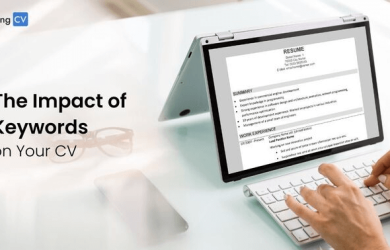
The transformative journey of a career change can be both exciting and daunting. As you redefine your professional trajectory, the significance of a meticulously crafted resume cannot be overstated. This comprehensive guide aims to provide career changers with valuable insights and practical tips to ensure their resume becomes a compelling narrative that effectively communicates skills, experiences, and aspirations.
1. Strategic Objective Statement
Initiate your resume with a clear and concise objective statement. Express your enthusiasm for the transition and articulate how your diverse background brings a unique and valuable perspective to the new field. This sets the tone for the reader, offering insight into your career goals.
2. Skills Emphasis
Identify transferable skills that bridge both your previous and target careers. Create a dedicated section on your resume to highlight these skills prominently. By doing so, you not only capture the recruiter’s attention but also demonstrate the applicability of your capabilities across different industries.
3. Relevant Experience
Focus on achievements and experiences that align with the requirements of the new role. Utilize a combination resume format, seamlessly blending chronological and functional elements. This structure allows you to emphasize relevant accomplishments and showcase your ability to excel in diverse environments.
4. Highlight Achievements
Quantify your achievements to underscore the impact you’ve made in your previous roles. By showcasing tangible results, you provide evidence of your adaptability, learning agility, and the value you can bring to your new career path.
5. Tailor Your Resume for the Job
Customize your resume for each application by aligning your skills and experiences with the specific requirements of the target job. Incorporate industry-specific keywords to navigate Applicant Tracking Systems (ATS) successfully, increasing the chances of your resume reaching human eyes.

6. Professional Development and Training
Include relevant certifications, courses, or training programs that enhance your qualifications for the new role. This demonstrates your commitment to continuous learning and staying abreast of industry trends.
7. Networking and Personal Branding
Leverage your professional network for informational interviews and advice. Establish a robust online presence, particularly on platforms like LinkedIn, to showcase your personal brand. Connect with professionals in your target industry to broaden your understanding and opportunities.
8. Address Career Gaps Transparently
If your career change has led to gaps in your professional timeline, address them transparently in your cover letter. Use this opportunity to explain how your unique journey has uniquely prepared you for the challenges of your new role.
9. Seek Professional Assistance
Consider engaging a professional resume writer specializing in career change transitions. An experienced writer can help articulate your narrative effectively, ensuring your resume stands out in a competitive job market.
10. Continuous Refinement
Treat your resume as a dynamic document, consistently updating and refining it as you accumulate experiences in your new field. Seek feedback from mentors or career advisors to ensure your resume remains effective and aligns with your evolving career goals.
In the dynamic landscape of career changes, your resume is not merely a document; it’s a powerful instrument for opening doors to new opportunities. By strategically showcasing your skills, experiences, and adaptability, you can confidently navigate this transition, telling a compelling story of your journey and the unique value you bring to your next professional adventure. Remember, a well-crafted resume is not just a record of your past but a powerful tool for shaping your future.



